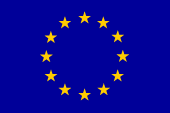NaCTeM article selected as example of world-leading research
2018-01-23
An article entitled Data Visualization with Structural Control of Global Cohort and Local Data Neighborhoods, co-authored by Dr. Tingting Mu and Prof. Sophia Ananiadou and published in the journal IEEE Transactions on Pattern Analysis and Machine Intelligence has been selected to appear the latest edition of In Abstract , which selects examples of world-leading research from the Faculty of Science and Engineering at the University of Manchester.
Below is the decscription of the research work undertaken, which appears in "In Abstract':
A mathematical solution to help humans see through high volume data by trusting their eyes
In data analytics, it has always been of high interest to study ways to create effective visual representations for large volumes of high-dimensional measurements, so that human viewers can acquire insight and understand underlying data properties and intrinsic structures based on their cognitive and perceptual skills. One popular strategy is to preserve the local relationships and similarities between neighbouring individual patterns in a visible, low-dimensional (e.g., 2D or 3D) space. A great deal of effort has been put to developing such algorithms in the past two decades.
Now, computer scientists at the Universities of Manchester and Liverpool have discovered that this type of “local” strategy can result in incorrect approximation of the global data structure and introduce substantial noise to the positioning of data groupings and cohorts in the visualising space. In addition to analysing this phenomenon, the researchers propose a mathematical solution to effectively “correct” such noise, together with a theoretical learning framework and nine algorithmic variations. The empirical performance of the proposed solution is extensively studied for five application problems and the researchers demonstrate more reliable visualisation output. An important target application of this work is to visualise high-dimensional data produced by various industries, such as ones related to biology, healthcare, media, marketing, economics, and research fields across the clinical, social and natural sciences and engineering.
More information...
http://www.mub.eps.manchester.ac.uk/in-abstract/data-visualization-global-cohort-local-data-neighborhoods/
| Previous item | Next item |
| Back to news summary page |
Featured News
- ELLIS Workshop on Misinformation Detection - 16th June 2025
- 1st Workshop on Misinformation Detection in the Era of LLMs (MisD)- 23rd June 2025
- Prof. Sophia Ananiadou accepted as an ELLIS fellow
- Invited talk at the 15th Marbach Castle Drug-Drug Interaction Workshop
- BioNLP 2025 and Shared Tasks accepted for co-location at ACL 2025
- Prof. Junichi Tsujii honoured as Person of Cultural Merit in Japan
- Participation in panel at Cyber Greece 2024 Conference, Athens
- New Named Entity Corpus for Occupational Substance Exposure Assessment
Other News & Events
- CL4Health @ NAACL 2025 - Extended submission deadline - 04/02/2025
- Shared Task on Financial Misinformation Detection at FinNLP-FNP-LLMFinLegal
- FinNLP-FNP-LLMFinLegal @ COLING-2025 - Call for papers
- Keynote talk at Manchester Law and Technology Conference
- Keynote talk at ACM Summer School on Data Science, Athens








